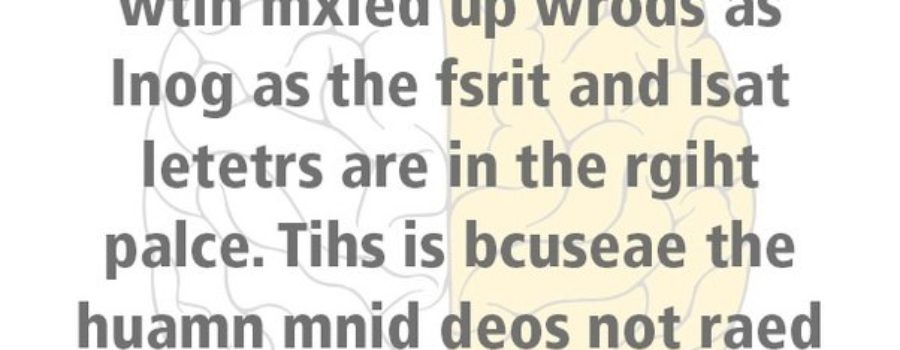Turns out, our peripheral field awareness contributes to smooth reading, too. This would account for those little “tests” you see online where you are asked to “read” a sentence with multiple letter omissions or a sentence with words reversed from the order anticipated. The anticipation is exactly that. We EXPECT certain letters or words to follow one another when we read a text, in part because of accumulated knowledge of English words and sentence structures. (This is why it is more difficult to read a text written in dialect, or direct quotes by people who are not native English speakers: the vocabulary and syntax are unexpected.) A friend who loves Shakespeare always says attending one of his plays is initially exhausting: you have to listen hard to catch the words because of the unfamiliarity of iambic pentameter in everyday speech. (Still genius, though, and definitely worth the work).
We can safely say, then, that reading involves our eyes “sampling” the information our eyes receive as well as “previewing” what’s coming next. Whether this happens because our attention actually shifts or whether some “pre-vision” peripheral attention is occurring parallel to our actual focus is still under discussion.
The flow of our eyes as we scan a line of print provides context and imprints meaning with every time we read. You can’t get too much. Which is one of the best reasons to read early and often with your preschooler or elementary age student!
Next up: What is change blindness, and what does it have to do with vision and attention?



